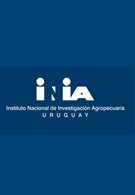ABSTRACT A major bottleneck to Introgressive hybridization is the lack of genome collinearity between the donor (alien) genome and the recipient crop genome. Structural differences between the homeologs may create unbalanced segregation of chromosomes or cause linkage drag. To assess large-scale collinearity between potato and two of its wild relatives (Solanum commersonii and S. chacoense), we used BAC-FISH mapping of sequences with known positions on the RH potato map. BAC probes could successfully be hybridized to the S. commersonii and S. chachoense pachytene chromosomes, confirming their correspondence with linkage groups in RH potato. Our study shows that the order of BAC signals is conserved. Distances between BAC signals were quantified and compared; some differences found suggest either small-scale rearrangements or reduction/amplification of repeats. We conclude that S. commersonii and S. chacoense are collinear with cultivated S. tuberosum on the whole chromosome scale, making these amenable species for efficient introgressive hybridization breeding.

